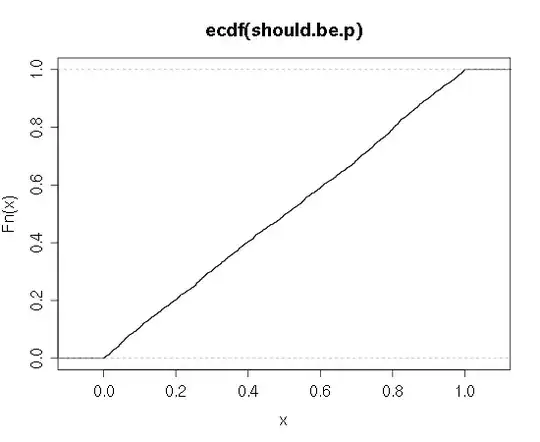I am trying to model a response variable which is a proportion (so a response between 0 and 1, see picture for distribution).
Ideally I would like to model it without using the actual counts, so as a decimal.
So far I have been using a binomial family in R. (The first approach proposed in this question How to fit a mixed model with response variable between 0 and 1?)
model <- glm(Response ~
X1 +
X2 +
X3,
data = Training_data,
family = 'binomial')
I think the model is doing okay, but when I use it for predictions it doesn't do a good job predicting when the ratio is 1 (As you can see from the picture).
I'm not sure if my approach of using a binomial distribution is wrong?
